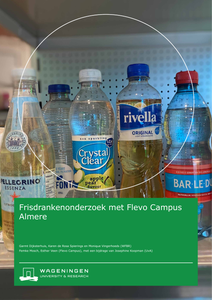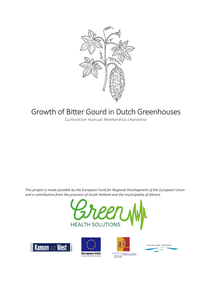Mild heat pasteurization, high pressure processing (HP) and pulsed electric field (PEF) processing of freshly squeezed orange juice were comparatively evaluated examining their impact on microbial load and quality parameters immediately after processing and during two months of storage. Microbial counts for treated juices were reduced beyond detectable levels immediately after processing and up to 2 months of refrigerated storage. Quality parameters such as pH, dry matter content and brix were not significantly different when comparing juices immediately after treatment and were, for all treatments, constant during storage time. Quality parameters related to pectinmethylesterase (PME) inactivation, like cloud stability and viscosity, were dependent on the specific treatments that were applied. Mild heat pasteurization was found to result in the most stable orange juice. Results for HP are nearly comparable to PEF except on cloud degradation, where a lower degradation rate was found for HP. For PEF, residual enzyme activity was clearly responsible for changes in viscosity and cloud stability during storage. Industrial relevance: Development of mild processing technologies with a minimal impact on fruit juice can be considered as a true alternative of fresh fruit. The present work presents a fair comparison of mild heat treated, high pressure (HP) and pulsed electric field (PEF) processed orange juice as an alternative for thermal pasteurization. Orange juices were monitored during two months of storage.
DOCUMENT
Food production has put enormous strain on the environment. Supply chain network design provides a means to frame this issue in terms of strategic decision making. It has matured from a field that addressed only operational and economic concerns to one that comprehensively considers the broader environmental and social issues that face industrial organizations of today. Adding the term “green” to supply chain activities seeks to incorporate environmentally conscious thinking in all processes in the supply chain. The methodology is based on the use of Life Cycle Assessment, Multi-objective Optimization via Genetic Algorithms and Multiple-criteria Decision Making tools (TOPSIS type). The approach is illustrated and validated through the development and analysis of an Orange Juice Supply Chain case study modelled as a three echelon GrSC composed of the supplier, manufacturing and market levels that in turn are decomposed into more detailed subcomponents. Methodologically, the work has shown the development of the modelling and optimization GrSCM framework is useful in the context of eco-labelled agro food supply chain and feasible in particular for the orange juice cluster. The proposed framework can help decision makers handle the complexity that characterizes agro food supply chain design decision and that is brought on by the multi-objective nature of the problem as well as by the multiple stakeholders, thus preventing to make the decision in a segmented empirical manner. Experimentally, under the assumptions used in the case study, the work highlights that by focusing only on the “organic” eco-label to improve the agricultural aspect, low to no improvement on overall supply chain environmental performance is reached in relative terms. In contrast, the environmental criteria resulting from a full lifecycle approach is a better option for future public and private policies to reach more sustainable agro food supply chains.
DOCUMENT
New consumer awareness is shifting industry towards more sustainable practices, creating a virtuous cycle between producers and consumers enabled by eco-labelling. Eco-labelling informs consumers of specific characteristics of products and has been used to market greener products. Eco-labelling in the food industry has yet been mostly focused on promoting organic farming, limiting the scope to the agricultural stage of the supply chain, while carbon labelling informs on the carbon footprint throughout the life cycle of the product. These labelling strategies help value products in the eyes of the consumer. Because of this, decision makers are motivated to adopt more sustainable models. In the food industry, this has led to important environmental impact improvements at the agricultural stage, while most other stages in the Food Supply Chain (FSC) have continued to be designed inefficiently. The objective of this work is to define a framework showing how carbon labelling can be integrated into the design process of the FSC. For this purpose, the concept of Green Supply Chain Network Design (GSCND) focusing on the strategic decision making for location and allocation of resources and production capacity is developed considering operational, financial and environmental (CO2 emissions) issues along key stages in the product life cycle. A multi-objective optimization strategy implemented by use of a genetic algorithm is applied to a case study on orange juice production. The results show that the consideration of CO2 emission minimization as an objective function during the GSCND process together with techno-economic criteria produces improved FSC environmental performance compared to both organic and conventional orange juice production. Typical results thus highlight the importance that carbon emissions optimization and labelling may have to improve FSC beyond organic labelling. Finally, CO2 emission-oriented labelling could be an important tool to improve the effects eco-labelling has on food product environmental impact going forward.
DOCUMENT
The importance of water and energy accessibility and use has become more important as new insight into their role for sustainable development goals has become mainstream. The inclusion of water and energy in strategic decision-making is thus key. Supply chain network design (SCND) in the food industry is an interesting case study for the incorporation of water and energy utilization during the design process of global production systems. In the current green SCND research, frequently, single indicators are used such as carbon emissions to measure environmental impact. This paper presents a case study applied to an orange juice supply chain, formulated as a multi-objective optimization model. A single environmental impact indicator optimization approach is paired against one that includes water and energy use explicitly in the objective function set. Mixed conclusions are shown from the results pairing the two strategies side by side.
DOCUMENT
Het onderzoek beschreven in dit rapport is een samenwerking tussen Flevo Campus en WFBR. Flevo Campus wil dat de consumentenkeuze voor frisdranken een meer bewuste en gezondere keuze wordt, niet alleen gedreven door nutriënteninformatie en prijs, maar ook gedreven door smaakbeleving en fun. Dit onderzoek belicht een aantal verschillende aspecten van frisdrankconsumptie door consumenten, gebaseerd op een: 1. inventarisatie van smaakprofielen in gebruik bij andere dranken, 2. literatuurstudie over de perceptie van verschillende soorten frisdrank, 3. historisch onderzoek 'frisdrank als cultureel symbool', 4. consumentenstudie onder 30 consumenten in Almere naar de groepering van verschillende soorten frisdrank, 5. online consumentenstudie naar de groepering van verschillende soorten frisdrank onder 164 consumenten.
DOCUMENT

Bitter gourd is also called sopropo, balsam-pear, karela or bitter melon and is a member of the cucumber family (Cucurbitaceae). It is a monoecious, annual, fast-growing and herbaceous creeping plant. The wrinkled fruit of the bitter gourd is consumed as a vegetable and medicine in Asia, East Africa, South America and India. The aim of this bitter gourd cultivation manual is to make this cultivation accessible to Dutch growers and in this way be able to meet market demand. In addition, this cultivation manual aims to provide insight into the standardized production of the medicinal ingredients in the fruit.
DOCUMENT

Powerpointpresentatie gebruikt tijdens een VIDA webinar op 25 september 2019.
DOCUMENT

Websites placing cookies on your computer to track your browsing behavior. TikTok stores your personal data in China. Are you aware of what products, services, and organisations do with your personal data? It is often not obvious. Our digital lives are becoming more and more prominent. We are now meeting each other virtually for work and leisure, and are spotted and traced without our knowledge, both in physical places (public areas and streets) and in virtual spaces. Technology is developing rapidly and policy makers are not able to keep up, resulting in unknown threats for citizens in modern society. Moreover, technology can lead to inequality and exclusion, as demonstrated in the Dutch childcare benefits scandal. The aim of the Inholland Digital Rights Research Team, co-founded by Professors Wina Smeenk, Ander de Keijzer and Ben Wagner, is to focus their work on the social, economic, cultural, communication, design and technological elements that can lead to a digitally responsible society. This means that we want to be part of the debate and research on how technology in our digital age can contribute to the quality of peoples’ lives: how can people benefit from the digital society and how are they hindered, or even worse, excluded from partaking in our digital society. We do this in our research lines, as well as in the sustainable media lab courses and the data-driven minor.
DOCUMENT

For children it is important to consume enough vegetables to establish healthy dietary patterns. Taste acceptance is an important factor contributing to food choice and consumption. Sweetness and sourness enhancement can increase acceptance of specific foods in children. The aim of this study was to determine the effect of sweetness and sourness enhancement on acceptance of cucumber and green capsicum purees in 5-6-year-old children. Three concentrations of sucrose (2, 5 and 10%) and citric acid (0.05, 0.08 and 0.15%) were added to cucumber and green capsicum purees. Children (n = 70, 5.7 ± 0.5 yrs) assessed acceptance of the vegetable purees using a 5-point hedonic facial scale. Sweetness enhancement significantly increased acceptance of cucumber purees (5 and 10% sucrose) and green capsicum purees (2 and 10% sucrose) compared to unmodified purees. Sourness enhancement (0.05, 0.08 and 0.15% citric acid) did not significantly influence acceptance of cucumber and green capsicum purees compared to unmodified purees. Children differed in acceptance of vegetable purees with added sucrose and citric acid. Sweetness likers (cucumber 77.1%, green capsicum 58.6%) accepted sucrose concentrations better than sweetness non-likers in both vegetables. Sourness likers (cucumber 50.0%, green capsicum 44.3%) accepted medium and high concentrations of citric acid better than sourness non-likers in cucumber and all citric acid concentrations in green capsicum. We conclude that enhancement of sweetness increases acceptance of cucumber and green capsicum purees in most children whereas enhancement of sourness is better accepted by only a few children. This study highlights the challenge to get children to better accept vegetables, since only sweetness enhancement improved acceptance while addition of sucrose is undesirable. For a small subset of children enhancing sourness might be an alternative strategy to increase acceptance of vegetables
DOCUMENT

The Nutri-Score front-of-pack label, which classifies the nutritional quality of products in one of 5 classes (A to E), is one of the main candidates for standardized front-of-pack labeling in the EU. The algorithm underpinning the Nutri-Score label is derived from the Food Standard Agency (FSA) nutrient profile model, originally a binary model developed to regulate the marketing of foods to children in the UK. This review describes the development and validation process of the Nutri-Score algorithm. While the Nutri-Score label is one of the most studied front-of-pack labels in the EU, its validity and applicability in the European context is still undetermined. For several European countries, content validity (i.e., ability to rank foods according to healthfulness) has been evaluated. Studies showed Nutri-Score's ability to classify foods across the board of the total food supply, but did not show the actual healthfulness of products within different classes. Convergent validity (i.e., ability to categorize products in a similar way as other systems such as dietary guidelines) was assessed with the French dietary guidelines; further adaptations of the Nutri-Score algorithm seem needed to ensure alignment with food-based dietary guidelines across the EU. Predictive validity (i.e., ability to predict disease risk when applied to population dietary data) could be re-assessed after adaptations are made to the algorithm. Currently, seven countries have implemented or aim to implement Nutri-Score. These countries appointed an international scientific committee to evaluate Nutri-Score, its underlying algorithm and its applicability in a European context. With this review, we hope to contribute to the scientific and political discussions with respect to nutrition labeling in the EU.
DOCUMENT
